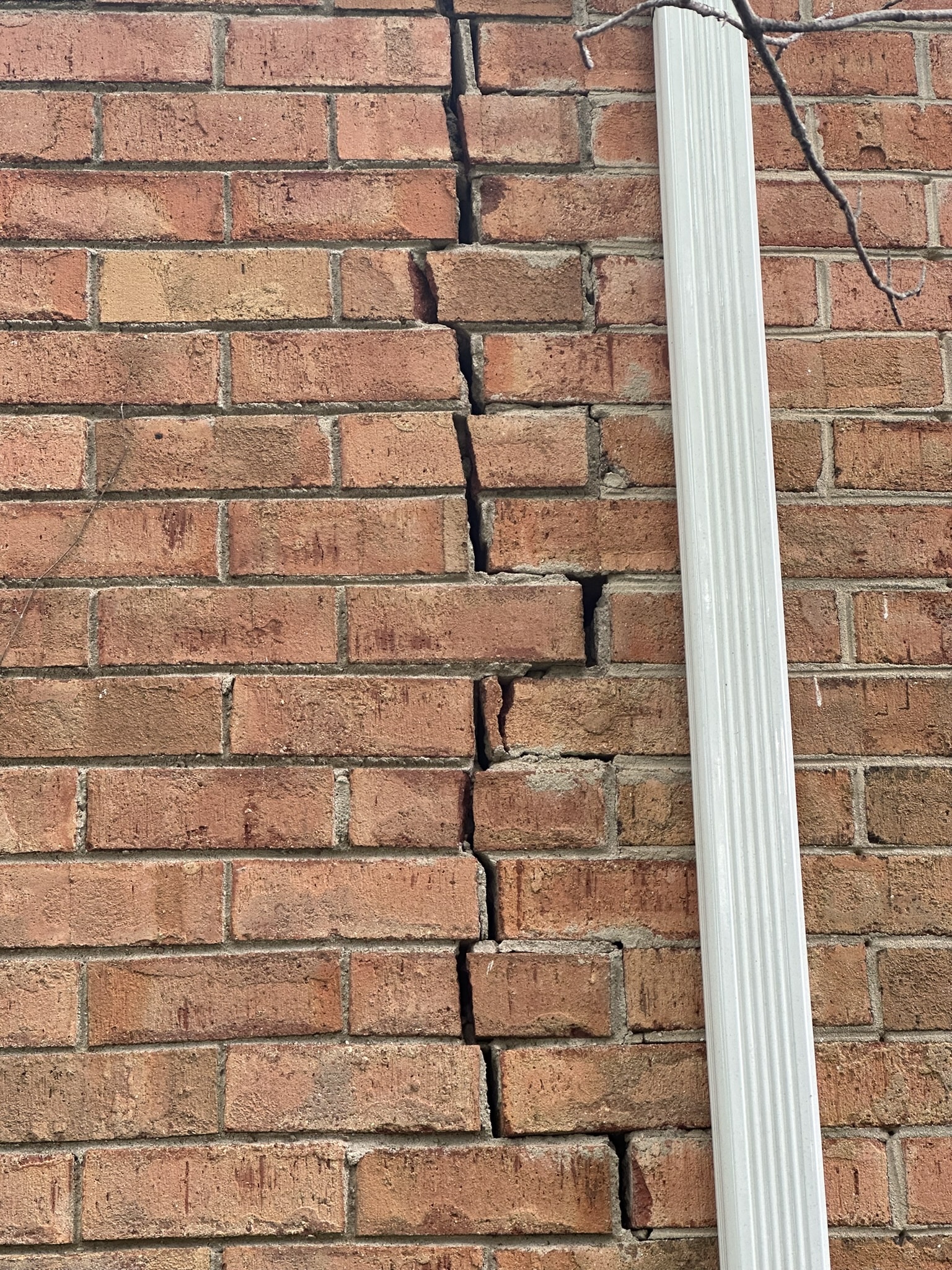
It starts with a small crack — a thin line across your basement wall or a hairline split in your floor slab. It’s barely noticeable. It doesn’t leak. It’s easy to ignore.
But that tiny crack might be the beginning of something much bigger. Many homeowners make the mistake of brushing off minor foundation cracks as harmless, only to discover months or years later that those small lines have grown into expensive structural problems.
In this article, we’ll explore the long-term consequences of neglecting minor foundation cracks, why they form, and how early intervention can save you thousands in repairs and protect your home’s value.
🔑 Key Takeaways
- Minor cracks can indicate ongoing foundation movement or soil problems.
- Over time, small cracks can widen, deepen, and allow water intrusion.
- Neglected cracks may lead to structural instability, mold, and declining property value.
- Professional evaluation is the best way to distinguish between harmless and serious cracks.
- Early repairs are faster, less invasive, and more affordable than major foundation fixes.
Why Do Minor Foundation Cracks Happen?
Cracks are common in concrete; it’s part of how the material behaves under stress. However, that doesn’t mean every crack is harmless.
Common Causes
- Shrinkage
As concrete cures, it loses moisture and slightly contracts, creating small hairline cracks. These are usually vertical and shallow. - Soil Movement
Expansive or shifting soils beneath the foundation cause differential movement, resulting in stress cracks. - Temperature Changes
Seasonal freeze-thaw cycles cause expansion and contraction that can fracture the concrete over time. - Hydrostatic Pressure
Water buildup in soil can push against foundation walls, leading to cracking, especially horizontal cracks. - Construction Deficiencies
Poor concrete mix, insufficient reinforcement, or inadequate footings can result in premature cracking.
The Danger of “Just Watching It”
Many homeowners take a “wait and see” approach to foundation cracks. While understandable, this strategy can allow a small problem to escalate into a major one.
Here’s What Can Happen Over Time:
1. Cracks Widen and Deepen
What starts as a 1/16″ hairline may gradually expand to 1/4″ or more — a clear sign that ongoing movement or stress is at play.
2. Water Intrusion Begins
As cracks open, they allow moisture to seep into your basement or crawl space. This can lead to:
- Mold and mildew growth
- Musty odors
- Damage to stored items or finished spaces
- Deterioration of structural materials
3. Structural Damage Escalates
Cracks can extend through the foundation wall, slab, or footing. Left untreated, they contribute to:
- Bowing or leaning walls
- Uneven floors
- Doors and windows that stick or won’t latch
- Gaps between walls and ceilings
4. Repair Costs Skyrocket
Sealing a small crack might cost a few hundred dollars. Reinforcing a bowing wall or lifting a settled foundation with piers can cost $10,000 to $30,000 or more.
5. Resale Value Drops
Buyers are cautious about homes with foundation issues — even small cracks. Ignored signs of trouble can derail sales or lower your asking price significantly.
Types of Minor Cracks and Their Potential Impact
| Crack Type | Typical Cause | Potential Risk If Ignored |
|---|---|---|
| Hairline vertical cracks | Shrinkage or minor settlement | Can widen with ongoing movement |
| Diagonal cracks near corners | Uneven settlement | May spread, indicating foundation shift |
| Horizontal wall cracks | Hydrostatic pressure | Structural risk — wall may bow or fail |
| Floor slab cracks | Soil movement or shrinkage | Risk of moisture intrusion or trip hazard |
When a Minor Crack Is a Major Warning Sign
While not all cracks require urgent repair, some characteristics indicate the need for immediate attention:
- The crack is widening or lengthening
- You notice water seepage or dampness
- The wall is bowing or bulging
- Cracks are accompanied by sloping floors or sticking doors
- You can insert a coin or pencil into the crack
If you see any of these, it’s time to call a foundation expert.
What Professionals Look for During Crack Evaluations
A qualified foundation specialist will assess:
- Crack direction and pattern (horizontal, vertical, stair-step)
- Crack width and depth
- Signs of moisture or mold
- Structural movement (wall alignment, floor level)
- Soil conditions around the home
- Exterior signs of foundation shift (brick cracks, gaps)
They’ll determine whether the crack is cosmetic, stable, or a symptom of deeper structural problems — and recommend the right course of action.
Early Repair Options: Fast, Affordable, and Non-Invasive
Epoxy or Polyurethane Injection
- Use: Seals small cracks and bonds concrete.
- Benefit: Prevents water intrusion and reinforces structural integrity.
Carbon Fiber Reinforcement (if wall movement is detected)
- Use: Stabilizes foundation walls showing early signs of bowing or cracking.
- Benefit: Prevents future shifting and further cracking.
Exterior Drainage Corrections
- Use: Prevents soil saturation and hydrostatic pressure that worsen cracks.
- Benefit: Addresses the root cause, not just the symptom.
Soil Moisture Management
- Use: Maintains stable moisture levels around the foundation.
- Benefit: Prevents soil movement that leads to cracking.
Real-Life Example: A Small Crack That Grew Big
A homeowner in Roanoke, VA, noticed a small diagonal crack near a basement window. Thinking it was from minor settlement, she ignored it. Over two years, the crack widened to nearly 1/4″, and moisture began seeping in after heavy rains.
By the time she called Seal-Tite Basement Waterproofing, the wall was bowing inward slightly and the floor near the crack had begun to slope.
Solution:
- Carbon fiber straps installed to stabilize the wall
- Epoxy injection to seal the crack
- Grading adjustments and downspout extensions to manage water flow
Had the repair been done two years earlier, only crack sealing and drainage correction would have been needed — at a fraction of the cost.
FAQs: Minor Foundation Cracks
Are all small cracks dangerous?
Not necessarily. Many hairline cracks are harmless, but some are early signs of bigger issues. Monitoring is key.
Can I seal small cracks myself?
DIY kits exist, but they won’t solve structural problems. It’s best to have cracks evaluated before sealing to make sure there’s no movement.
How fast can cracks grow?
That depends on soil conditions, weather, and the underlying cause. Some stay stable for years; others can worsen rapidly with seasonal soil changes.
Do cracks mean my house is sinking?
Not always, but some cracks, especially diagonal or stair-step types, may indicate settlement or soil failure beneath the foundation.
Will insurance cover foundation crack repair?
Most homeowners’ insurance policies exclude foundation damage from soil movement or long-term settling. Always check your policy.
Conclusion: A Small Crack Today Can Be a Big Problem Tomorrow
It’s easy to overlook a minor foundation crack — until it grows, leaks, or starts shifting your home’s structure. What begins as a thin line can quietly evolve into a serious structural and financial issue if ignored.
The good news? Early detection and intervention are simple, affordable, and effective. Whether it’s a quick epoxy injection or reinforcing a vulnerable wall, taking action now can prevent costly foundation failure down the road.
If you’ve spotted cracks in your foundation — no matter how small — contact Seal-Tite Basement Waterproofing for a professional evaluation. We’ll help you understand what those cracks really mean and how to fix them before they turn into something much worse.

Seal-tite Basement Waterproofing Co. is a full service basement environment contractor. We carry an A+ Better Business Bureau rating. We repaired over 40,000 homes and structures in Virginia, West Virginia, Tennessee, and North Carolina. We are fully insured and licensed. We have worked in all types of locations, including residential and commercial locations, government agencies, colleges, hospitals, churches, and condo associations.
Seal-tite® offers a lifetime transferable warranty. We carry a Class A Contractor’s License and we are fully insured. Our satisfied customers range from government agencies to businesses, hospitals, colleges, churches, and thousands of homeowners. Your home is probably the single largest investment you will make in your lifetime. Don’t wait, call Seal-tite® to help make your home dry, safe and livable.

